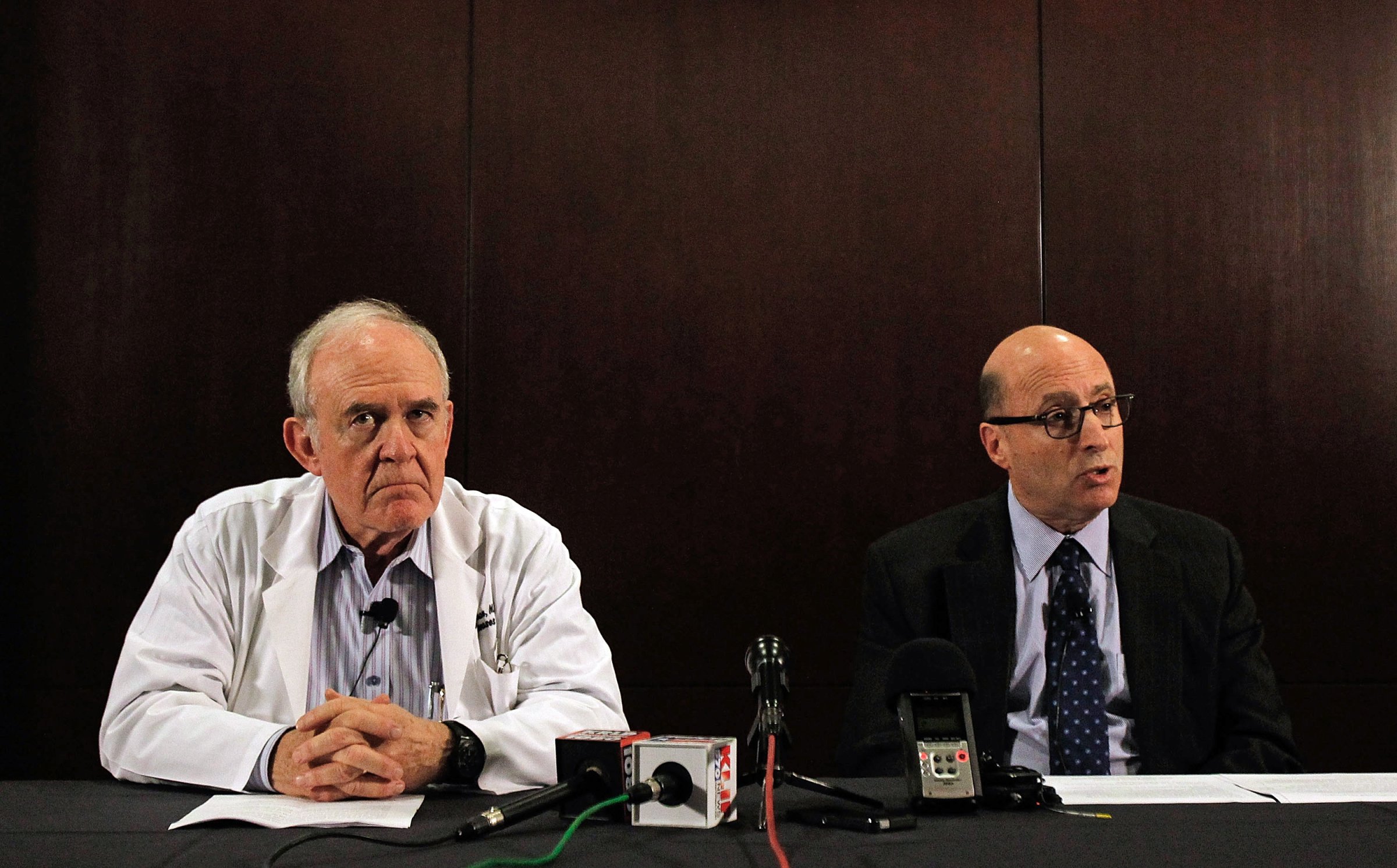
U.S. health officials were working Wednesday to determine whether the first diagnosis of Ebola on American soil is an isolated case—or whether the patient may have infected others.
The Centers for Disease Control and Prevention (CDC) dispatched a nine-person epidemiology team to Dallas on Tuesday night. Their job is to contain any potential spread of the virus by working with local health officials to document whether the patient had contact with other people—who, where and when. How they’ll do this is less like the movie Outbreak and more of a labor-intensive process of interviews and monitoring.
The trail they will investigate starts Sept. 26, when a man came into Texas Health Presbyterian Hospital in Dallas for medical care. For two days, he had been feeling ill with fever and muscle aches—generally not concerning, which is why he was sent home. Two days later, he was worse, and was brought back to the hospital by ambulance.
It wasn’t immediately clear if doctors had asked the patient the critical question they should be asking all people who seek medical care for fevers, which is whether he had recently been outside of the U.S., and whether he had traveled to any of the countries in West Africa—including Guinea, Liberia or Sierra Leone—now battling the worst Ebola outbreak in the disease’s history. A Texas health official clarified Wednesday that a nurse had indeed asked the patient if he’d been to Africa and that he said he had, but hospital staff never factored that into their initial treatment.
MORE: How U.S. Doctors Can Contain Ebola
It turned out he had. Four days before he began feeling sick, the patient had been in Liberia before flying to the U.S. This time, based on his symptoms and his travel history, the doctors admitted him into an isolated room and called the state health department and the CDC’s 24-hour hotline; officials recommended testing the patient’s blood for the Ebola virus.
It tested positive, and now health officials from national and local agencies are on the scene. Their job is to contain any potential spread of the virus by documenting who, where and when the patient had contacted other people who might have been exposed via the patient. Because Ebola is only transmitted by droplets—in urine, blood or other body fluids—and only contagious when patients become symptomatic, those at highest risk are people who would have had the closest and most direct contact with the patient. Those who are exposed would also have to have direct mucous contact with infected fluids, such as via the eyes, nasal passages, or through a cut in the skin. So the passengers on the patient’s flights from Liberia to the U.S., for example, aren’t considered at high risk of exposure since he was not experiencing symptoms then.
MORE: Ebola in the United States: What You Need to Know
But the emergency medical personnel who brought the patient to Texas Health Presbyterian in the ambulance might be. They, and the man’s close family members, are being monitored for the virus’ longest incubation period—21 days—for any symptoms of Ebola, such as fever, nausea, vomiting or muscle weakness. If they don’t show any symptoms after that time, they’re likely in the clear.
Epidemiologists take a ring approach to tracing contacts of patients—starting with the circle of people with the most direct contact, such as family members or those who share close living arrangements. Each contact is asked about their own recent interactions with people, and this information is built into a contact tree of folks, not all of whom would be put on watch. Depending on how direct the contact with the patient was, even family members may not be quarantined but asked to refrain from traveling out of the city or country, for example, and avoiding public areas like movie theaters or shopping malls. A handful of children who were in the home with the patient are being monitored, local health officials said at a news conference on Wednesday, but they were allowed to attend school as usual.
MORE: Containing Ebola Is Extremely Labor Intensive, Former CDC Researcher Says
If anyone in the first circle of contacts develops symptoms, then doctors would step up their monitoring of the next ring of contacts, asking them to stay away from public gatherings for 21 days. This pattern continues until no one in a ring reports symptoms in the incubation period; that suggests they were not exposed and therefore don’t have the infection.
All of this, of course, depends on honest and accurate information from the patient and his contacts about where they have been and with whom—something that has been an issue in west Africa, where stigma against Ebola has led patients to flee health volunteers who are attempting to trace contacts, or fail to report people they have interacted with.
That shouldn’t be a problem here, CDC director Tom Frieden said. “We have identified all the people who could have had contact with the patient while he was infectious,” he said during a news conference. “We are stopping it in its tracks in this country. There is no doubt in my mind that we will stop it here.”
More Must-Reads from TIME
- Why Trump’s Message Worked on Latino Men
- What Trump’s Win Could Mean for Housing
- The 100 Must-Read Books of 2024
- Sleep Doctors Share the 1 Tip That’s Changed Their Lives
- Column: Let’s Bring Back Romance
- What It’s Like to Have Long COVID As a Kid
- FX’s Say Nothing Is the Must-Watch Political Thriller of 2024
- Merle Bombardieri Is Helping People Make the Baby Decision
Contact us at letters@time.com